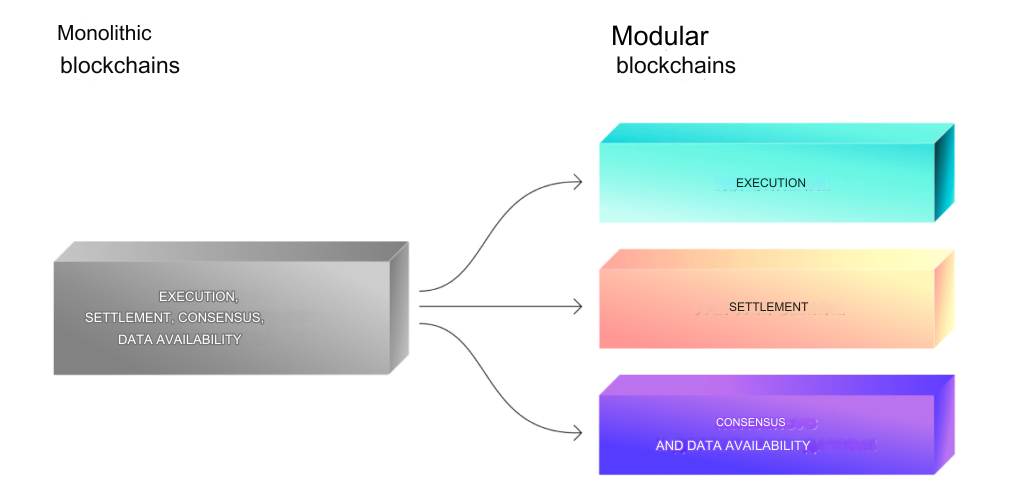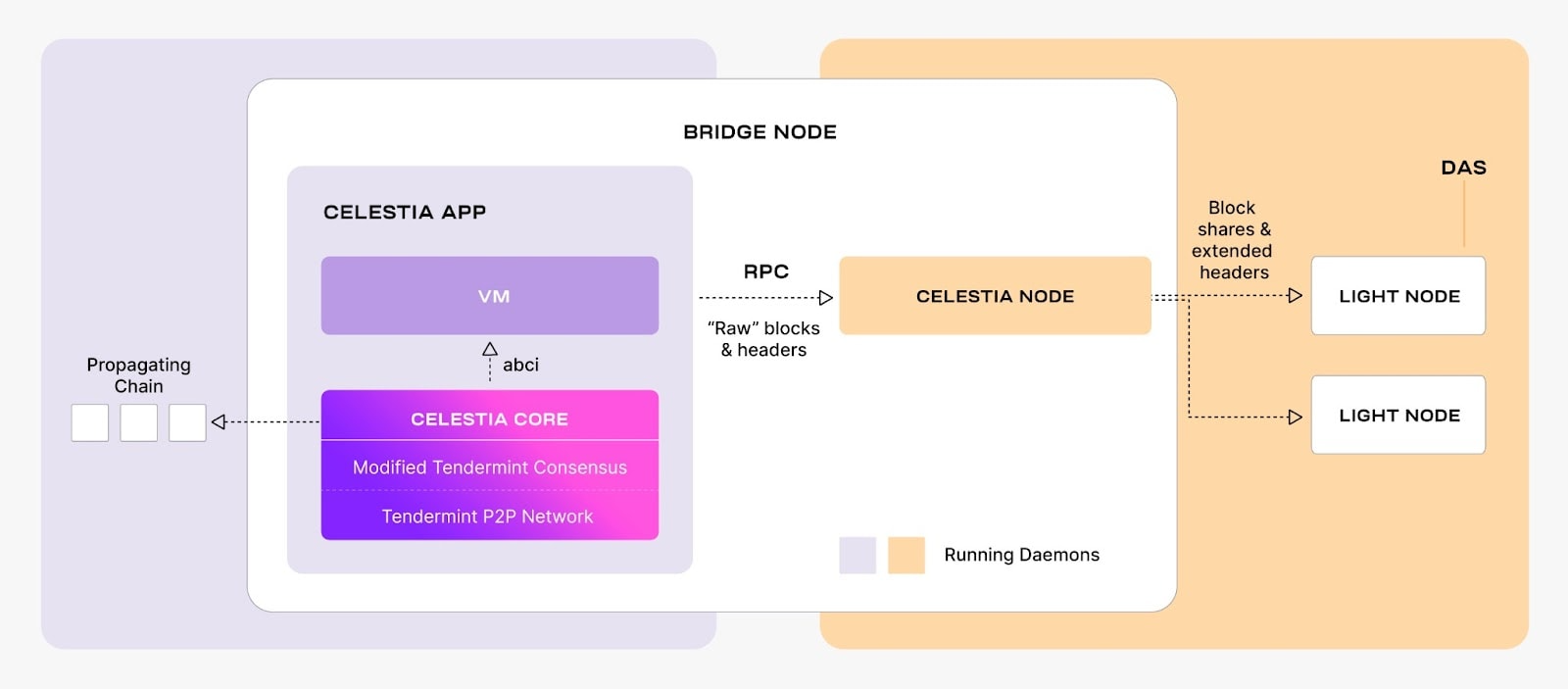Celestia is a modular network that addresses the problem highlighted by Ethereum founder Vitalik Buterin in 2017, known as the "blockchain trilemma." It aims to balance three key characteristics of a distributed ledger: scalability, security, and decentralization.
- The History of Celestia
- What is a modular blockchain?
- What does the data availability layer represent, and why is it important?
- What is Celestia and how does it work?
- The cryptocurrency TIA: concept, functions, and distribution
- Conclusion

The History of Celestia
Celestia Labs, formerly known as LazyLedger Labs, was founded by Mustafa Al-Bassam, Ismail Khoffi, and John Adler in 2019.
Mustafa Al-Bassam, a computer science Ph.D., collaborated with Vitalik Buterin to develop the theoretical foundations for using fraud proofs and Data Availability Sampling (DAS), which became pivotal for Celestia technology.
Ismail Khoffi, previously a lead developer at Tendermint and Interchain Foundation, now serves as the technical director of Celestia Labs.
John Adler has also made significant contributions to the industry as a co-founder of Fuel Network, a modular blockchain platform focusing on transaction execution.
The Celestia team secured $56.5 million in investment through two funding rounds, with major backers including Polychain Capital, Binance Labs, and Jump Crypto.
On October 31, 2023, the project launched its mainnet, accompanied by an airdrop of the TIA cryptocurrency to 580,000 addresses, with an estimated value of around $120 million according to FundStrat data.
What is a modular blockchain?
To better understand how the Celestia platform operates, it is important to grasp the concept of modular blockchain. To ensure the smooth operation of decentralized networks, four functions need to be performed:
- Consensus achievement
- Transaction execution
- Data access
- Computation processing
Monolithic blockchains, such as Ethereum, face scalability issues because these functions compete for the same resources.

One potential solution is a modular blockchain architecture, which involves separating these functions into distinct layers. Each layer represents a separate module designed to address specific tasks.
What does the data availability layer represent, and why is it important?
One of the key elements of blockchain security is the data availability layer, which directly impacts its reliability.
Distributed systems must perform the following tasks:
- Execution: All network nodes verify transactions according to the rules of the consensus algorithm. In account-based blockchains, nodes execute transactions to compute the new network state.
- Consensus: Network nodes agree on which transactions will be included in new blocks and in what order.
- Settlement or dispute resolution: This function ensures the irrevocability of confirmed transactions and provides resolution of disputes regarding their validity.
- Data availability: Each node contains a copy of the entire blockchain and stores every transaction. A network node can request data from another node.
The last function is crucial for ensuring the security of any blockchain. It facilitates the publication and preservation of transactions, states, and other necessary network information by validators. Additionally, it assumes that every participant in the network has the ability to verify and confirm the distributed ledger of transactions.
In monolithic blockchain networks, participants need to download all data from blocks for verification, which becomes problematic as block sizes increase. For regular users, such data volumes become impractical to download, hindering their ability to verify the integrity of the entire blockchain.
Celestia offers a solution to this problem by allowing light nodes to verify only a small portion of data from each block using a technique known as Data Availability Sampling (DAS). This approach enables blockchain scalability while maintaining its security.
What is Celestia and how does it work?
Celestia is a modular blockchain network capable of scaling through the separation of execution and consensus levels, as well as through the use of Data Availability Sampling (DAS) technology. This network is solely responsible for ordering transactions and ensuring data availability.
The Data Availability (DA) layer in Celestia is built on a Proof-of-Stake (PoS) architecture and implemented through the celestia-app application, which operates on a modified version of the Tendermint Core consensus algorithm and the Cosmos SDK framework.

Unlike traditional blockchains, Celestia supports various types of nodes, each specializing in specific tasks: consensus nodes, Blobstream nodes, and DA (Data Availability) nodes, which are further subdivided into:
- Bridge nodes: bridge the data availability and consensus layers.
- Full storage nodes: store all network data but are not connected to the data availability layer and do not participate in consensus.
- Light nodes: verify data availability.
The Data Availability (DA) layer in Celestia includes key elements such as Data Availability Sampling technology and Name-Merkle Trees (NMT), which contribute to practical blockchain scalability.
The cryptocurrency TIA: concept, functions, and distribution
TIA cryptocurrency serves multiple key functions within the Celestia network:
- Used for paying fees and ensuring consensus mechanism operation.
- Transaction fees, like PayForBlobs, are denominated in TIA.
- On-chain operations also incur fees.
- Validators prioritize transactions with higher fees.
- Project teams can utilize Celestia as a DA layer without issuing their own tokens.
- TIA functions similarly to ETH in Ethereum, serving as currency and gas payment.
- Celestia employs a PoS algorithm for consensus.
- TIA holders can vote on network parameter changes and influence funding distribution from the community pool.
Distribution:
Upon the launch of Celestia, the total supply of TIA tokens amounted to 1 billion. The cryptocurrency distribution was as follows:
| % | Category | Description |
|---|---|---|
| 26.8% | Celestia Funding | Funds used for research, development, and support of ecosystem initiatives by Celestia Foundation and core developers. |
| 20% | Community Allocation | Includes Genesis Drop airdrops (7.4%) and rewards for activity in testnets, as well as funds for future initiatives (12.6%). |
| 19.7% | Investor Allocation | Share allocated to Series A and B investors. |
| 17.6% | Celestia Labs Allocation | Percentage of funds allocated to initial contributors of Celestia Labs company. |
| 15.9% | Seed Investor Allocation | Share provided to early-stage financing investors. |
Conclusion
Celestia holds a leading position in the emerging sector of modular blockchains, offering innovative solutions for network scalability and security. It provides developers with the necessary infrastructure for creating and maintaining blockchains, offering flexible solutions for implementing data availability and consensus levels. It is worth noting the native token of Celestia - TIA, which plays a key role in the network economy, being used for fee payments and participation in the consensus mechanism. The successful debut of this cryptocurrency strengthens the project's status as a key player in the growing market.
However, it is important to consider the presence and potential emergence of competitors such as NEAR DA, Avail, and EigenDA, which pose additional challenges for Celestia.




